- Home
- Encyclopedia
- Frank Grouard: Silent Man of The Plains
Frank Grouard: Silent Man of the Plains
Wearing a “regular Indian costume,” with his long black hair and forgotten English, Frank Grouard could have easily been mistaken for one of the many Lakota or Cheyenne people at the Red Cloud Agency in the spring of 1875. Having been held captive by Lakota bands for several years, Grouard had gone from being a closely guarded prisoner to a trusted friend and valued member of the tribe.
Image
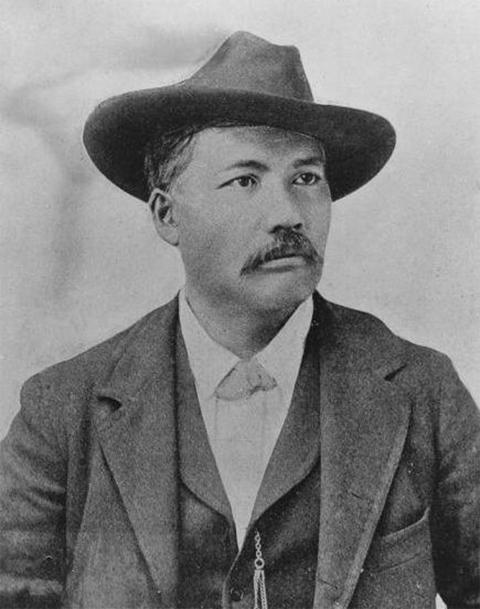
Still, he yearned for his freedom and in the fall of 1874 began plotting his escape to the agency. That same year brought Camp Robinson to the area, with soldiers preparing for war under the command of General George Crook. Grouard’s experiences among the Lakota, his knowledge of their camps and habits, made him an ideal scout for the general. Frank Grouard’s life in the West from mail carrier to captive and then from being a “brother” to Sitting Bull to serving as a scout for General Crook, reveals the complicated relationships and loyalties of the changing western frontier.
Telling His Life Story
Frank Grouard was a man of few words, and his epic life story would still be shrouded in mystery if it weren’t for Joe DeBarthe, founder of the Buffalo Bulletin. DeBarthe first met Grouard at Fort Washakie in 1887. Obviously intrigued, he noted that Grouard had had to "not only abandon but partly forget his native tongue." When Debarthe tried to interview Grouard, thanks to an introduction secured by a government scout, Nelson "Charlie" Yarnell, he "found the man a veritable shpynx.[sic] He made a few signs, which I did not understand, but which Mr. Yarnell kindly interpreted (on the side) as indicating that Grouard did not care to talk for publication."
Grouard observed that the Indians who captured him rarely conversed audibly, even among themselves. Instead, they made themselves understood through the language of signs. Grouard adopted this habit. When DeBarthe discovered that other journalists had failed to even get a sign from the silent scout, he became even more determined to secure an interview.
By 1891 Joe DeBarthe’s printed opinions landed him on the invader’s kill list during the Johnson County War. A lawyer and politician in Buffalo, Charles A. Burritt, described the situation a year later, “Joe DeBarthe was dropped out of the ring. It seems that the reports of his valor were much exaggerated. He was scared to death and immediately took refuge in whiskey drinking […]. He has been ousted from his position as editor of the Bulletin and Moeller succeeds him.” Fleeing Buffalo, DeBarthe again met Grouard.
When DeBarthe asked for an interview again—four years after his first attempt—Grouard replied, “I will give you the story of my life.”
According to his contemporary Dr. Will Frackelton, a circuit dentist, Grouard’s response was “What good’ll that do? People won’t believe it.” Sadly, to the frustration of historical scholars, DeBarthe added spice to Grouard’s stories in his zeal to sell books. Still, even with DeBarthe’s exaggerations, The Life and Adventures of Frank Grouard contains valuable insights into a man who lived in two worlds.
DeBarthe’s interviews of Grouard happened in the room next to Frackelton’s office. Frackelton later remembered, “I had the good fortune to overhear a fine collection of stories of the old Indian days. During these visits Frank insisted the room be partially darkened while he sat near the window with light from it full on DeBarthe’s face. It was perhaps, another early habit of caution not to be lightly abandoned.”
Grouard’s Early Life
Born Sept. 20, 1850, on the island of Anaa near Tahiti, Frank Grouard was a descendant of adventuring souls, destined to follow his family’s legacy. Grouard’s paternal line included a French Huguenot refugee turned privateer during the American Revolution; a sailor on the frigate, Brandywine; and his father, Benjamin, a missionary for the Church of Latter-day Saints. In 1843, Benjamin went on a mission to the Tuamotu Islands in the South Pacific Ocean (about 250 miles east of the island of Tahiti), where he met and married Frank’s mother, a native to the islands. The couple had three sons, with Benjamin bringing his family back to the states in 1852, after the French took over the island and made it “very unpleasant for foreigners,” according to DeBarthe.
Frank was two when the family arrived in San Francisco. His homesick mother and brothers returned to Anaa a year later. Frank would never see his mother or brothers again. He stayed behind with his father and was soon entrusted to the care of the family of Addison Pratt, a fellow missionary. While Grouard was still a very small child, the Pratt family moved to southwestern Utah where the boy remained until his fifteenth year when he ran away to begin life for himself.
According to his interviews with DeBarthe, young Grouard hired out to a freighter in San Bernardino, California, in 1865. His job was to drive a mule team to Helena, Montana Territory, a position called a mule skinner. During his first haul, loaded with choice liquors, young Grouard saw so much drinking and fighting among his fellow mule skinners that he took a dislike to whiskey. He said, “I have never touched a drop of whisky from that time on without some good and sufficient reason.” Grouard continued to work as a mule skinner for 3 years.
Encounters with Indians
In 1869, he "went to breaking horses for the Holliday Stage Company." He told DeBarthe, "I broke horses there all that fall, or close to fall, and it was during this time that the Blackfeet Indians commenced to get ugly." Grouard then traveled with some militia to a camp near Diamond City east of Helena, where he hired out as a pony express rider for C.C. Huntley.
That year Huntley added the mail contract between Diamond City and Fort Hall, in Idaho Territory, to his extensive stagecoach and freighting business. It took Grouard four days and nights to make the 211-mile trip, riding one pack horse and leading another. He had made a few of these round trips when on the return to Fort Hall in November, he was “surrounded by almost twenty Blackfeet in full war costume.” They pulled Grouard off his horse, “and stripped him of every vestige of clothing. Then they pointed in the direction he had come and told him to go.”
Grouard ran barefoot over land covered with patches of cactus and prickly pear. DeBarthe wrote, “He realized nothing but fear of pursuit, and that fear lent wings to his feet.” He eventually made it to the gates of Fort Hall. Four days later, Grouard opened his eyes to see the face of John Johnson, the widely known “Liver Eating” Johnson. “For three long months he lay upon a bed of furs, suffering the tortures of hell itself,” while Johnson nursed him “with all the care and solicitude of a mother.”
Captive of the Hunkpapa
After healing, he was put on the mail line again. Grouard explained, “They could not get anybody to carry the mail because the Sioux were committing depredations […]. I carried all that summer and the next fall till the first of January.” On January 2nd, 1870, at age 19 while carrying the government mail, Grouard was captured by a group of Hunkpapa Lakota men. Riding with his head down buried in a fur cap and his heavy buffalo coat drawn up against the falling snow, he was attacked in a gulch by someone hitting him over the back. “That was the first indication that I had of Indians.”
Image
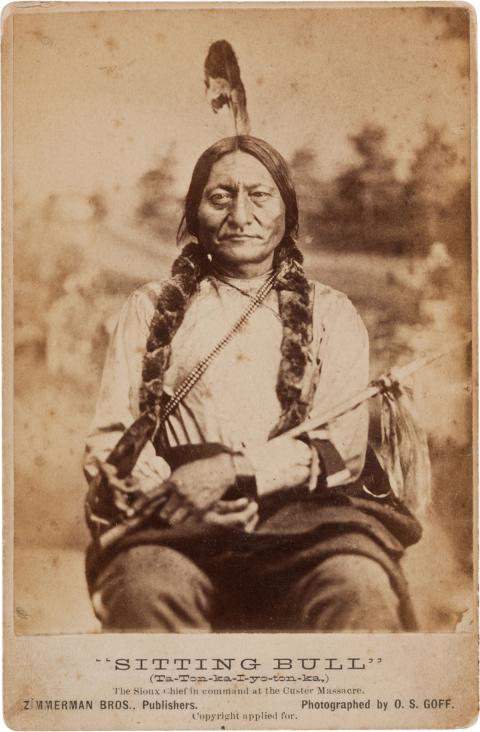
Knocked from his horse, Grouard immediately found himself in a fight for his life. One man already had Grouard’s gun while another tried to strip him of his big buffalo coat. Grouard seized the man trying to steal his coat and held him fast as a human shield against his own gun. While Grouard struggled to keep both his coat and life, Sitting Bull watched the fight from afar and mistook him for a “huge bear, standing upright, fighting its would-be captor.” When he discovered Grouard, he laughed heartily and insisted that he be brought into camp unharmed as a captive. During a council meeting to decide Grouard’s fate, Sitting Bull adopted him as a brother and gave him the name “Standing Bear.” Grouard spent the next five years living with the Lakota, during which time, “he passed gradually from the status of a closely guarded prisoner to that of a member of the tribe,” Frackelton wrote later.
After sixteen months of close surveillance, Sitting Bull trusted Grouard with an old flint-lock gun—and soon that gun enabled Grouard to transform from prisoner to friend. During a gambling game, when all the Hunkpapa had their weapons set aside, a deer came over the ridge and started toward the men. With all eyes on him, Grouard lifted his gun and felled the deer in a single, clean shot from a distance much greater than any man imagined the gun was capable of firing.
When Sitting Bull heard of the incident, he was very pleased and immediately presented Grouard with a powder-and-lead muzzle-loading Hawken gun. After that, all the men were anxious to have Grouard accompany them on their hunting trips, and he was able to come and go as he pleased. He roamed the wilds at will and being a natural plainsman, he acquired a thorough and intimate knowledge of every mountain pass, crag, canyon and ravine.
Life with the Lakota
While describing his life among the Lakota, Grouard often slipped into a collective use of “we” and “us.” He explained to DeBarthe, “I include myself in the plural ‘we’ because, being unable to secure my freedom, and having made up my mind to make a study of the character and habits of the Indian, I was doomed to remain until Uncle Sam should force the redmen [sic] to accept life on the reservations or I accomplished my purpose.” Still, it is clear from his reminiscences that Grouard built close relationships with the Lakota and identified with their struggles while he endured hardships alongside them.
Grouard described his observations of tribal members’ duties, hunting parties, treatment of children, dress, dance, and how they bury their dead. He told DeBarthe a story of falling asleep only to become wide awake surrounded by rattlesnakes and stories of dangerous buffalo hunts.
In 1873, Grouard angered Sitting Bull and almost lost his life. He told Sitting Bull that he was headed out to steal horses. Instead, he went to Fort Peck on the Missouri River in Montana Territory to inform the soldiers about “half-breed” traders, who had an exclusive deal with Sitting Bull and began trading whiskey with the Lakota. Santee Lakota Indians spotted Grouard there and told Sitting Bull of this betrayal. “If you ever saw a mad Indian, he was one. I never saw an Indian quite as mad as he was.” Sitting Bull threatened to kill Grouard, but his mother kept the peace between the two men. Grouard didn’t stay much longer with the Hunkpapa.
After meeting four other bands of Lakota near the Yellowstone River, Grouard moved to the Oglala camp. “I never went back to Sitting Bull’s camp. I had never met Crazy Horse until this time. […] Crazy Horse had somewhat peculiar features. He had sandy hair and was of a very light complexion. He didn’t have the high cheekbones that the Indians generally have and didn’t talk much. He was a young-looking Indian. There were a few powder marks on one side of his face.” After living with Crazy Horse and meeting him in battle, Grouard remarked “Crazy Horse was the bravest man I ever knew or met – white, red or black.”
Grouard experienced the difficulties the Lakota faced in a changing West. Soldiers and pioneers were settling the land, treaties were being breached, and attacks and battles occurred frequently. Times were changing and not for the better in the life of the Indian. The tribal people were starving the buffalo were exterminated. Grouard recounted his own experiences of starvation and his desperation to trade for more ammunition. Living with the so-called “hostile Indians,” Grouard’s Lakota companions relied on trade with the “agency Indians” for ammunition and other supplies. After trading for more supplies following another desperate hunting trip, Grouard explained “the friendly Indians who lived upon the reservation found it greatly to their benefit to hold the most friendly relations with us, and, as they received their ammunition from the agents of the Great Father, we had no need to give up our wild freedom for supplies and promises which were never kept.”
Army Scout in the Indian Wars
After always plotting for his return to “Uncle Sam,” Grouard regained his freedom in 1875. At the Red Cloud Agency, Grouard was soon enlisted to invite Crazy Horse and Sitting Bull to the agency in consideration of a new treaty to open the Black Hills. Grouard met them near where the town of Dayton, Wyoming is today. After a council meeting where more than one hundred men spoke, it was decided that anyone wishing to sell their land could join Grouard, “but that the majority of them would stay there and fight it out.”
Image
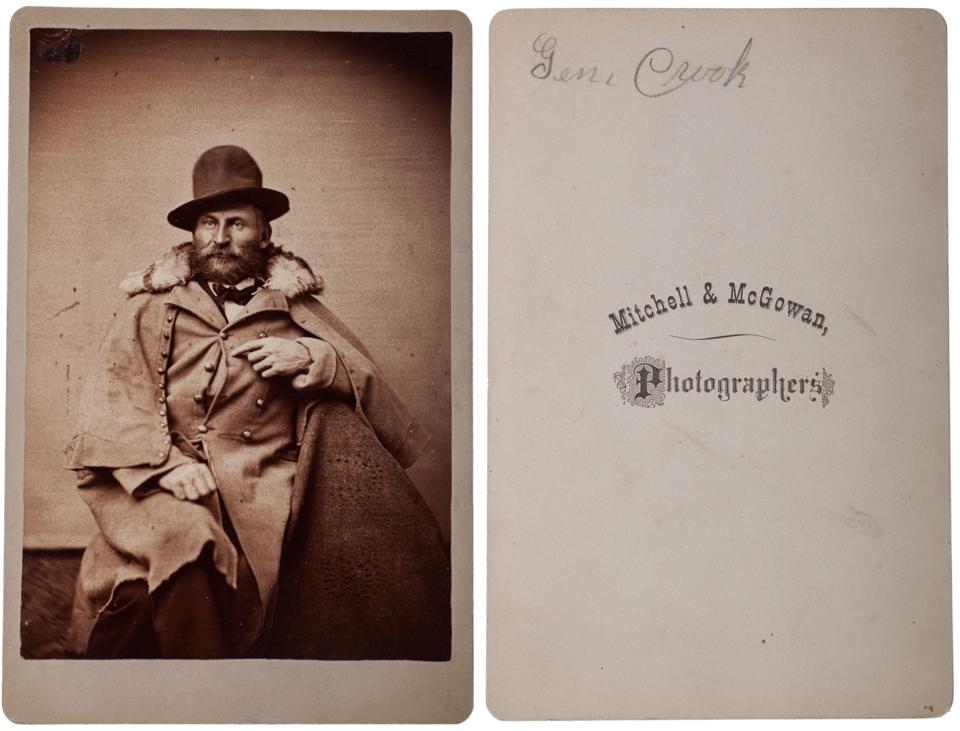
When he returned to the agency, Grouard earned around $500 for his efforts—enough money to buy himself a set of clothes and, finally, he was free. It took him another two to three months to remember how to properly speak English after spending nearly six years living with the Lakota.
Grouard joined General Crook as a scout in March 1876, after being recommended as a man familiar with the territory, “a person dressed like an Indian who can read and speak English,” as the post trader at the Red Cloud agency described him. Grouard soon made himself indispensable to Crook’s campaign.
Robert E. Strahorn, writing at the time for the Rocky Mountain News, often complimented Grouard the Army Scout. One of the stories Strahorn recounted told of Grouard’s impressive tracking skills—even in extreme weather. One night, Grouard tracked the trail of two Indians through a blizzard, “following it up with the keenness of a hound, and a fearlessness that would have imbued almost anyone with fresh vim and courage.” A soldier, J.A. Leermakers, noted, “The Indians had an advantage in their knowledge of the terrain, but Grouard also knew the country intimately.”
Perhaps the biggest compliment Grouard received from the U.S. Government was from Crook himself, who claimed, “I would sooner lose a third of my command than Frank Grouard.”
Divided Allegiances
Not everyone trusted Grouard. There were rumors of his warning villages before attack, and he often would slip away unnoticed during battles. Col. Anson Mills, who served under Crook in the Battle of the Rosebud and other engagements, claimed, “I told Grouard to go ahead and find the exact location of the village. Grouard went off and remained a long time, and when he returned, I noticed that he had a new horse. […] I at once suspected he was getting himself in shape to get away should we get into a hot fight. While the fighting was going on Grouard cleared out and I did not see anything of him.”
Image
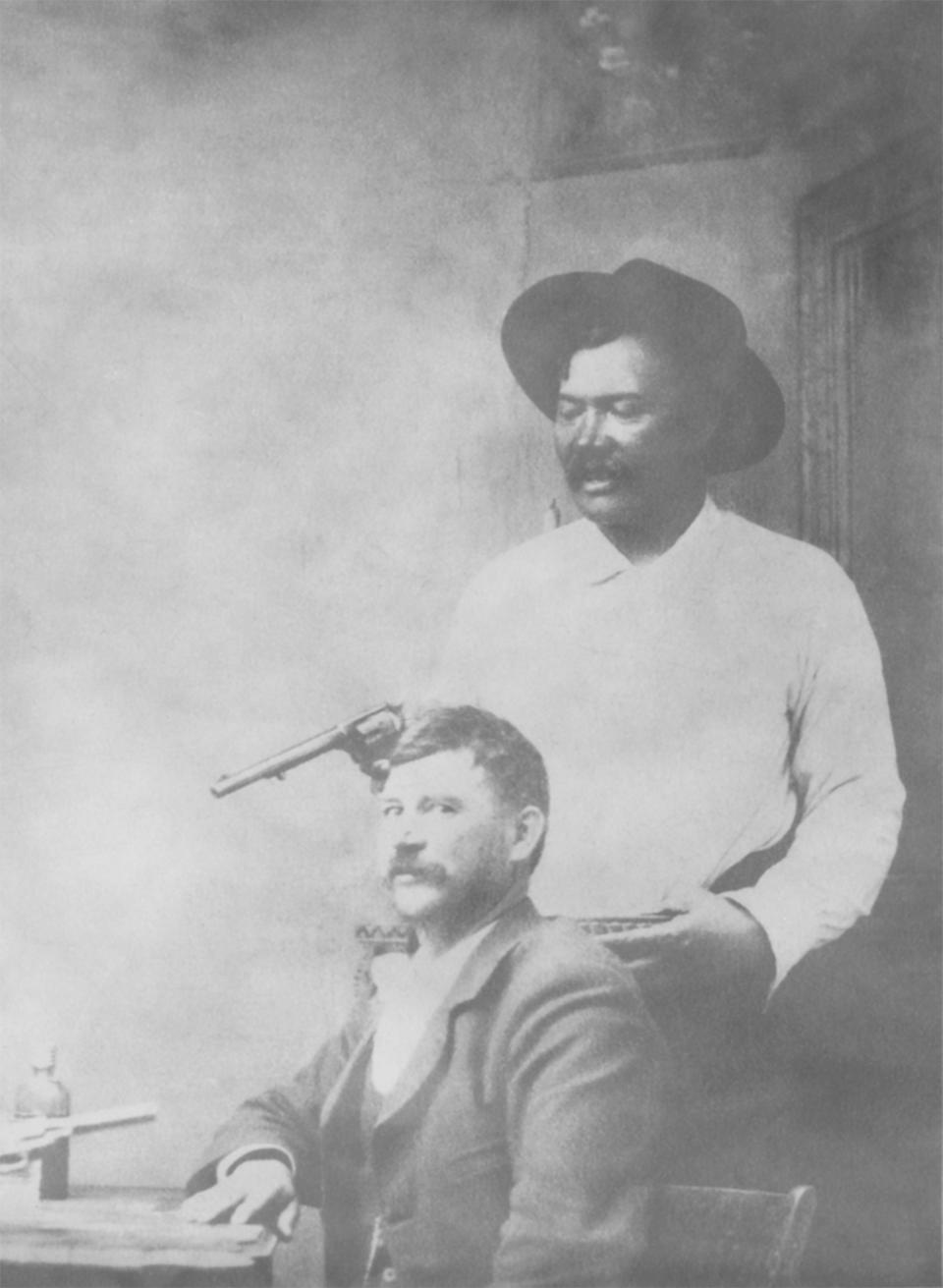
Grouard explained, “The Indians followed me and were watching all my movements. But I was watching theirs also.” He knew the tortures given a traitor of the tribe if they caught him. Surely, too, he quietly carried guilt over his betrayals that cost human lives.
Grouard participated in several campaigns and battles against the Lakota and Cheyenne. In 1890, he almost participated in the Wounded Knee massacre. DeBarthe reported, “Grouard says he was ordered out from Pine Ridge with Col. Forsyth’s command on the night of December 28th but was recalled by a courier before he had traveled half the distance between the agency and Wounded Knee […]. He is positive that the trouble which occurred the following morning arose through a misunderstanding on both sides, and that the awful catastrophe might, as well as not, have been averted.”
Without Grouard, the ‘misunderstanding’ caused Col. Forsyth and his men to murder between 150 and 300 Lakota men, women and children. Grouard’s account of his life is filled with his conflicting loyalties to the Lakota and the United States.
Life After War
Grouard continued to serve in the military, living in a home near Fort McKinney at what’s now Buffalo, Wyoming. As part of his military service, he investigated the Ghost Dances at Fort Washakie and helped to establish a mail route over the Big Horn mountains from Sheridan to Hyattville, Wyoming.
In 1893, word of Grouard’s epic life story and DeBarthe’s upcoming book made national news and caught the attention of Grouard’s father, the former Mormon missionary, who was living in California at the time. Despite not having seen him in thirty-seven years, the elder Grouard recognized his son as soon as he spotted him at the Sheridan Depot. DeBarthe described their meeting, “Not a word was spoken—silence was more eloquent than words—while these two men remained in each other’s embrace.”
Famed historian from Buffalo, Wyoming, Jim Gatchell had this to say about Grouard: “I myself first met Grouard in 1894 in Sheridan. Most of the forts had been abandoned and the ‘Indian Wars’ were over. His occupation as a scout was terminated. At our very first meeting we became firm friends. I traveled with Grouard to many battlefields where he had been a scout.”
Gatchell tells how Grouard, fluent in Sioux, helped him interview the Sioux to gather facts about the Indian Wars. “At that time Sheridan was full of men connected with the ‘Campaign of ‘76’- both red and white men. Every single one of them was strong in his praise of Grouard.” Gatchell claimed he was the most valuable scout connected with the U.S. Army.
Our “Silent man of the Plains” needed few words to navigate the complicated and changing western frontier. Gatchell proclaimed that Frank Grouard was a wonderful man. He surely had some wonderful adventures.
[Editor’s note: We are grateful to the Wyoming Cultural Trust Fund for support which in part made publication of this article possible].
Image
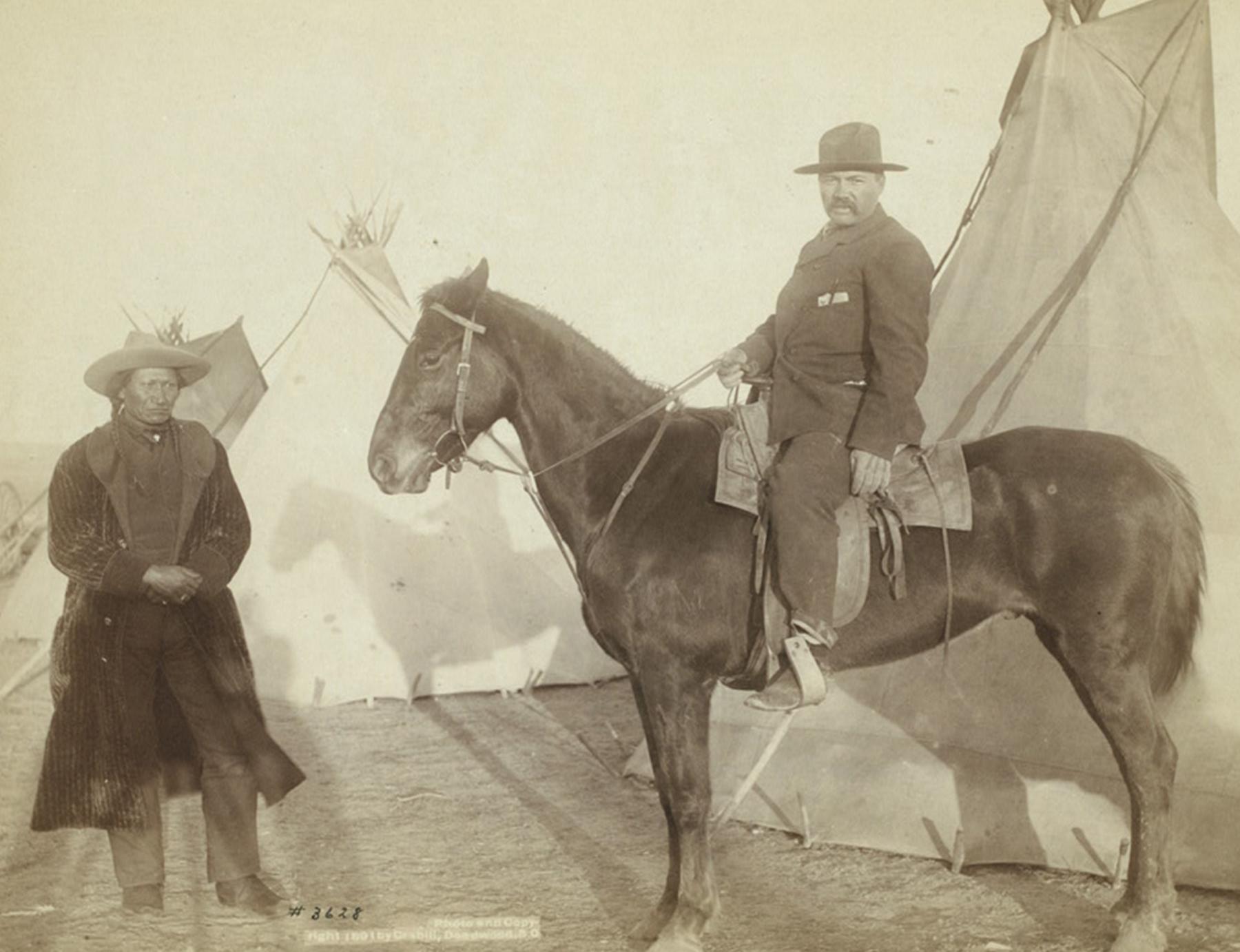
Resources
Primary Sources
- De Barthe, Joe. Life and Adventures of Frank Grouard. St. Joseph, Missouri: Combe Printing Co., 1894.
- Finerty, John F. War-Path and Bivouac. Chicago: Published Unity Bldg., 1890.
- Frackelton, Dr. Will. as told to Seeley, Herman Gastrell, Sagebrush Dentist. A.G. McClurg & Co., 1941.
Secondary Sources
- Abrams, Marc H. Sioux War Dispatches Reports from the Field, 1876-1877. Westholme Publishing, LLC., May 2012.
- Ancestry.com. Findagrave, 1900 census, Latter-day Saints’ Seventy Quorum Membership.
- “Buried History of Fort Robinson.” Fort Robinson History Center, History Nebraska, accessed Oct. 2, 2023 at https://history.nebraska.gov/fort-robinson-history-center/brief-history-of-fort-robinson/.
- Buffalo Bulletin, Aug. 15, 1957. Johnson County Library Archives.
- Butterworth, F. Edward. Adventures of a South Sea Missionary. Independence, Missouri: Herald House, 1961, 201-206.
- Cozzens, Peter. The Earth is Weeping: The Epic Story of the Indian Wars for the American West. Alfred A. Knopf, New York, 2016.
- Greene, Jerome A. Battles and Skirmishes of the Great Sioux War, 1876-1877: The Military View. University of Oklahoma Press, 1993.
- Hanson, Margaret B., editor and publisher. Powder River Country. Cheyenne, Wyoming: Frontier Printing, Inc., 1983.
- Hedren, Paul L. Powder River Disastrous Opening of the Great Sioux War. University of Oklahoma Press, 2016.
- Vaughn, J.W. Indian Fights New Facts on Seven Encounters. University of Oklahoma Press, 1966.
Illustrations
- The portrait of Frank Grouard, the photos of Sitting Bull and Gen. George Crook are from different Wikipedia pages. Used with thanks.
- The photo of Grouard and his friend Dan Mitchell is from Wyoming State Archives. Used with permission and thanks.
- The 1891 photo of Grouard and Oglala Lakota Chief Rocky Bear is from the Library of Congress. Used with thanks.
